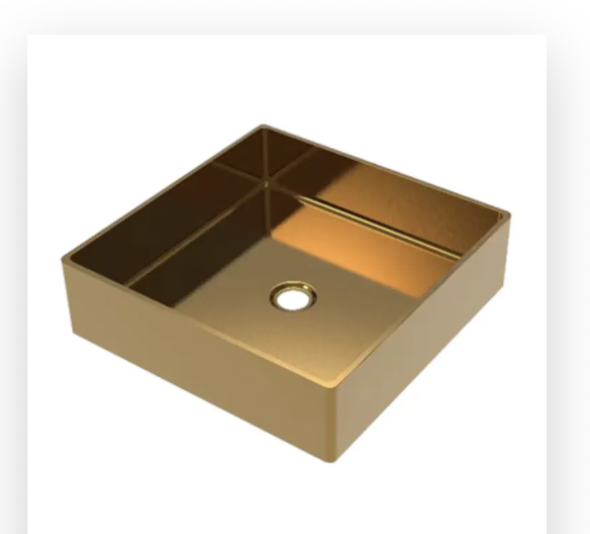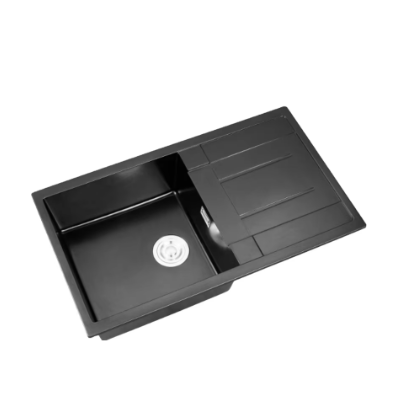Essential Characteristics of Professional-Grade Kitchen Sinks
In the demanding environment of commercial kitchens, the sink stands as a cornerstone of daily operations. A commercial sink must withstand constant use, harsh chemicals, extreme temperatures, and heavy cookware while maintaining its functionality and appearance. Understanding the vital features that make these fixtures truly durable can help business owners make informed decisions for their establishments.

Material Construction and Durability
Stainless Steel Excellence
The gold standard for commercial sink construction is stainless steel, particularly grades 304 and 316. These grades offer superior corrosion resistance and durability that commercial kitchens demand. The thickness of the steel, measured in gauges, plays a crucial role – with 16 to 14 gauge being ideal for commercial applications. Lower gauge numbers indicate thicker steel, providing better durability and sound dampening properties.
Alternative Material Options
While stainless steel dominates the commercial sink market, other materials like fireclay and composite granite have found their place in specific applications. Fireclay sinks offer exceptional heat resistance and aesthetic appeal, making them suitable for visible kitchen areas. Composite granite sinks provide outstanding durability and scratch resistance, though they're less common in commercial settings due to cost considerations.
Design Elements for Commercial Performance
Bowl Configuration and Size
Commercial sinks typically feature multiple bowls to facilitate efficient workflow. Double and triple bowl configurations allow simultaneous washing, rinsing, and sanitizing – essential for health code compliance. Bowl depths ranging from 10 to 14 inches accommodate large pots and equipment, while generous width and length dimensions ensure comfortable working conditions.
Ergonomic Considerations
Professional-grade sinks incorporate ergonomic features that reduce worker fatigue and enhance productivity. Rounded corners prevent food particle accumulation and make cleaning easier. Sloped bottoms ensure proper drainage, while sound-deadening pads reduce noise levels in busy kitchen environments. These features contribute to both functionality and worker comfort.
Professional Installation Requirements
Mounting Options
The mounting style of a commercial sink significantly impacts its durability and maintenance. Drop-in, undermount, and wall-mount installations each serve specific purposes. Undermount sinks offer seamless integration with countertops, preventing debris accumulation at the edges. Wall-mounted designs maximize floor space and simplify cleaning procedures.
Support and Infrastructure
Proper support systems ensure long-term durability of commercial sinks. Heavy-duty mounting brackets, reinforced wall supports, and adequate plumbing infrastructure are essential. Professional installation should include proper sealing, leveling, and connection to drainage systems that meet local health department regulations.
Maintenance Features and Longevity
Surface Treatment Technology
Modern commercial sinks often incorporate advanced surface treatments that enhance durability. These may include special finishes that resist scratches, minimize water spots, and maintain luster despite heavy use. Some manufacturers offer antimicrobial surfaces that inhibit bacterial growth, contributing to better hygiene standards.
Cleaning and Care Requirements
Durable commercial sinks are designed with maintenance in mind. Smooth, non-porous surfaces resist staining and simplify daily cleaning routines. Quality sinks maintain their appearance with minimal maintenance, requiring only regular cleaning with appropriate commercial-grade products and periodic inspection of seals and connections.
Regulatory Compliance and Safety Features
Health Code Standards
Commercial sinks must meet strict health department regulations regarding material safety, drainage efficiency, and sanitation capabilities. NSF certification ensures that sinks meet public health and safety standards. Proper backsplashes, overflow protection, and water temperature control features help maintain compliance with local health codes.
Workplace Safety Integration
Safety features are integral to commercial sink design. Non-slip textures around work areas, properly insulated hot water lines, and ergonomic heights reduce workplace accidents. Additional features like built-in chemical dispensers and spray rinse units enhance safety while improving operational efficiency.
Frequently Asked Questions
How often should commercial sinks be replaced?
High-quality commercial sinks typically last 15-20 years with proper maintenance. However, replacement might be necessary sooner if there are signs of severe wear, drainage issues, or changes in health code requirements.
What gauge stainless steel is best for commercial sinks?
For commercial applications, 14 to 16 gauge stainless steel is ideal. The lower the gauge number, the thicker the steel, with 14 gauge offering superior durability for heavy-duty use.
Are undermount sinks suitable for commercial kitchens?
Undermount sinks can be excellent choices for commercial kitchens, offering seamless integration with countertops and improved hygiene. However, they require proper installation and support to handle heavy commercial use.



